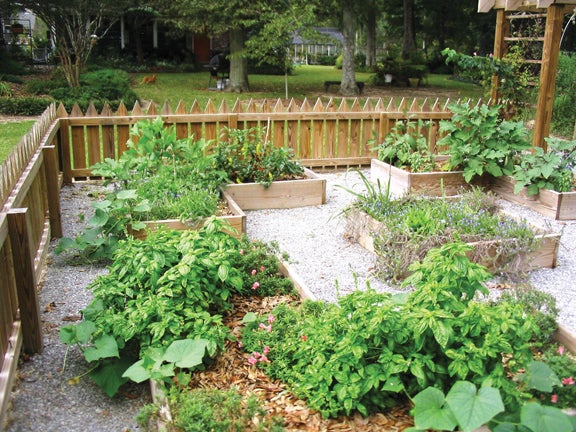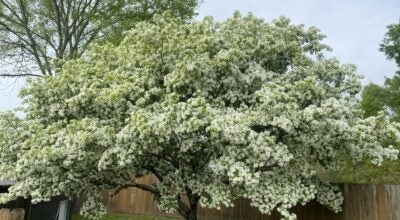Get It Growing: Keep an eye on your landscape during wet winter weather
Published 11:44 pm Tuesday, January 14, 2014
It is not unusual for rainy weather to be an issue in late winter or early spring in Louisiana. Rain is common in late December, January and February. March is often stormy.
Heavy rains, particularly when they persist over an extended period, place stresses on plants in our landscapes. Plants native to drier climates are particularly vulnerable to this type of weather.
Because plants need water, what’s the issue with too much rain? Although the soil may seem rather solid, it has lots of space between the particles. These spaces hold air and water, and plant roots need both. That’s where plants get the oxygen they need.
When it rains or you water a plant growing in a container, all of the spaces in the soil fill with water and displace the air. Gravity pulls the water, which moves downward. As it does, air moves back into the soil spaces.
If rain occurs frequently over an extended period, the air spaces in the soil stay filled with water. This deprives the roots of the oxygen they need. If it continues long enough, the roots stop functioning properly and may even begin to die. At this point, even though the soil is filled with water, the roots will not absorb it. This can cause plants to wilt even in wet soil.
When that happens, the roots are also more vulnerable to attack by fungal organisms in the soil that cause root rot. Root rot infections are highly damaging to the roots and are often fatal.
Our major defense against this happening is to make sure our landscape plants are growing in well-drained situations. Our primary tool to achieve this is planting in raised beds. Whether we are planting shrubs, bedding plants, perennials, vegetables or ground covers, the beds we prepare for them should be about 6 inches to 12 inches higher than the surrounding soil.
Raised beds drain faster and dry out more quickly than ground-level beds. I hear gardeners complain during dry periods that raised beds may need to be watered more often – and this may be true. However, we can irrigate and make sure plants have adequate water.
But when it rains frequently and excessively over a long period, we can do little as gardeners to deal with the situation. That’s why planting in raised beds gives our landscape plants an added advantage.
Fortunately, the situation we face from saturated soils in winter is not so dire. When we get heavy rains from hurricanes in late summer, however, the effects are far more destructive. Plants are actively growing late summer, and the warm soils encourage the activity of root rot fungal organisms in the soil.
But in wintertime many plants are still dormant, which makes them more forgiving of saturated soil. In addition, the fungal organisms that are responsible for root and crown rots are not nearly as active when the soil is cool. So despite the frequent rains and wet soils, we probably will not see major problems.
Many of the colorful cool-season bedding plants, such as dianthus, violas, snapdragons and pansies, are blooming this time of year. Cool-season bedding plants that produce relatively large flowers, such as pansies and petunias, are often beaten up and damaged by rain. When that happens, pinch or cut off these damaged, unattractive flowers if possible. During warm, wet spring weather, bedding plant flowers are often spotted and damaged by a fungal disease called Botrytis.
If the weather is wet this month, it is possible to see some root rot on cool-season bedding plants if beds do not drain well – particularly with root rot-prone plants like snapdragons. Again, this is where planting in raised beds provides an advantage.
So what have we learned? We must not forget to consider drainage when designing beds and choosing plants. Drainage issues need to be addressed during bed instillation. We can’t do much to improve drainage once the planting is done.
Raised beds are generally the best way to ensure good drainage. If you have a low area that tends to stay wet and you don’t want to put in a raised bed, you can certainly landscape the area with plants that enjoy wet soils. It is often better to choose plants adapted to the drainage in an area rather than to try and radically change it.
Sometimes drainage systems may need to be installed. The ideal time to evaluate the need to improve the movement of water off of your property is during a heavy rain after it has rained for a while. Put on your rubber boots, grab an umbrella and head outside. You will be able to clearly see how the water is flowing across your property, where it is exiting and what might be done to improve water movement off of your property. A licensed landscape architect can help design and install drainage when needed.
Even with good drainage, you must choose plants that are adapted to the amount of rainfall we get. If you read a plant description that indicates a plant prefers to be dry in winter, it will have difficulty thriving in our climate. Although we may have relatively dry summers on occasion, you can pretty much rest assured we will generally have abundant rain during our winter and early spring months.






